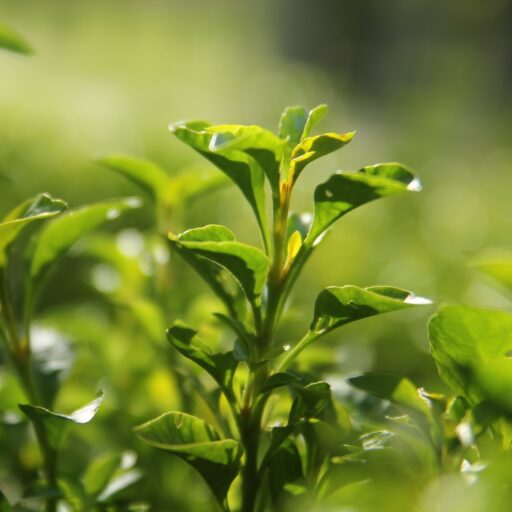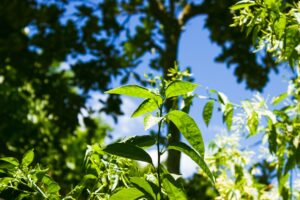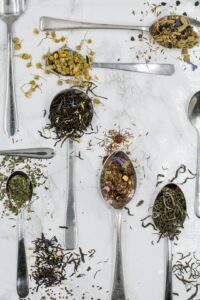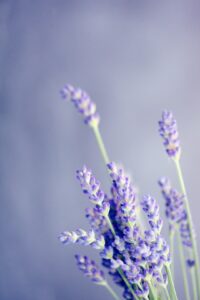Support our educational content for free when you purchase through links on our site. Learn more
[2023] Herbal Tea Plants: A Comprehensive Guide to Growing Your Own Tea Garden
Quick Answer:
Looking to grow your own herbal tea plants? You’ve come to the right place! In this guide, we’ll cover everything you need to know about growing herbal tea plants, including the best plants to grow, how to prepare and brew herbal tea, and tips for maintaining a thriving tea garden. So grab your gardening gloves and let’s get started!
Table of Contents
- Quick Tips and Facts
- What Plants are Good for Making Tea?
- How to Prepare Herbal Tea
- How to Brew the Best Plants for Tea
- Tips for Maintaining a Thriving Tea Garden
- FAQ
- Conclusion
- Recommended Links
- Reference Links
Quick Tips and Facts
Before we dive into the details, here are some quick tips and interesting facts about herbal tea plants:
- Herbal tea, also known as tisane, is made from the leaves, flowers, seeds, or roots of various plants.
- Growing your own herbal tea plants allows you to enjoy fresh, flavorful tea while adding beauty to your garden.
- Many herbal tea plants have medicinal properties and offer a range of health benefits.
- Some popular herbal tea plants include mint, chamomile, lavender, and lemon balm.
- Herbal tea plants can be grown in containers or directly in the ground, depending on the plant’s specific needs.
- Most herbal tea plants prefer well-draining soil and partial to full sun exposure.
- Harvesting herbs in the morning, after the dew has dried, ensures the highest concentration of essential oils.
- Drying herbs for tea can be done by hanging them upside down in a cool, dry place or using a dehydrator.
Now that you have a taste of what’s to come, let’s explore the world of herbal tea plants in more detail.
What Plants are Good for Making Tea?
When it comes to herbal tea plants, the options are endless. Here are some of the best plants to grow for making tea, along with their unique flavors and benefits:
| Plant | Flavor | Benefits |
|---|---|---|
| Mint | Refreshing and cooling | Digestive aid, calming |
| Chamomile | Floral and apple-like | Relaxing, soothes sour stomach |
| Lavender | Floral and slightly sweet | Calming, aids in sleep |
| Lemon Balm | Citrusy and minty | Calming, improves mood |
| Rose Hips | Tangy and fruity | High in Vitamin C, boosts immunity |
| Nettle | Earthy and grassy | Detoxifying, rich in minerals |
| Hibiscus | Tart and cranberry-like | Rich in antioxidants, supports heart health |
| Lemongrass | Citrusy and lemony | Digestive aid, calming |
| Echinacea | Earthy and slightly bitter | Boosts immunity |
| Ginger | Spicy and warming | Aids digestion, reduces inflammation |
These are just a few examples, but the world of herbal tea plants is vast. Feel free to experiment with different combinations and discover your own favorite blends!
How to Prepare Herbal Tea
Preparing herbal tea is a simple and enjoyable process. Here’s a step-by-step guide to help you get started:
-
Harvesting: Harvest your herbs in the morning, after the dew has dried. Choose healthy leaves, flowers, or roots for the best flavor and potency.
-
Cleaning: Rinse the harvested herbs gently under cool water to remove any dirt or debris.
-
Drying: There are several methods for drying herbs, including air drying, using a dehydrator, or oven drying. Choose the method that works best for you and follow the specific instructions for each herb.
-
Storing: Once your herbs are dry, store them in airtight containers away from direct sunlight. This will help preserve their flavor and potency.
How to Brew the Best Plants for Tea
Brewing herbal tea is a delightful experience that allows you to fully enjoy the flavors and benefits of your homegrown plants. Here are two popular methods for brewing herbal tea:
-
Infusion: This method is suitable for delicate herbs like chamomile and mint. Simply pour hot water over the herbs and let them steep for 5-10 minutes. Strain and enjoy!
-
Decoction: Decoction is ideal for tougher herbs like ginger and echinacea. Start by simmering the herbs in water for 15-20 minutes. Strain and savor the rich flavors.
Remember, the brewing time and water temperature may vary depending on the herb you’re using. Feel free to experiment and find the perfect balance for your taste buds.
Tips for Maintaining a Thriving Tea Garden
To ensure your herbal tea plants thrive, here are some essential tips to keep in mind:
-
Soil and Sun: Most herbal tea plants prefer well-draining soil and partial to full sun exposure. Make sure to choose the right location for each plant based on its specific needs.
-
Watering: Herbal tea plants generally prefer moderate watering. Avoid overwatering, as it can lead to root rot. Water the plants when the top inch of soil feels dry.
-
Pruning: Regular pruning helps promote healthy growth and prevents the plants from becoming too leggy. Trim back any dead or damaged leaves to maintain the plant’s vitality.
-
Pest Control: Keep an eye out for common pests like aphids and caterpillars. Use organic pest control methods or companion planting to deter unwanted visitors.
-
Harvesting: Harvest your herbs regularly to encourage new growth. Avoid harvesting more than one-third of the plant at a time to ensure its continued health.
By following these tips, you’ll be well on your way to a thriving tea garden that will provide you with an abundance of flavorful herbs for years to come.
FAQ
What type of plant is used to make herbal tea?
Herbal tea is made from a variety of plants, including leaves, flowers, seeds, and roots. Some popular herbal tea plants include mint, chamomile, lavender, and lemon balm.
Read more about “How Many Years Does It Take to Grow Tea? …”
Which plants to grow for tea?
There are numerous plants you can grow for tea, depending on your taste preferences and desired health benefits. Some excellent options include mint, chamomile, lavender, rose hips, nettle, and hibiscus.
Read more about “… Green Tea Plants for Sale: Your Guide to Growing Your Own Tea Garden”
What teas can you grow at home?
You can grow a wide range of teas at home, including herbal teas, green teas, and even some black teas. Herbal teas are the easiest to grow and require minimal processing.
Read more about “… How to Grow Your Own Herbal Tea: A Comprehensive Guide”
Is herbal tea good for plants?
Yes, herbal tea can be beneficial for plants. You can use cooled herbal tea as a natural fertilizer or spray it on the leaves to deter pests. Just make sure to dilute the tea before using it on your plants.
Read more about “… Does Growing Tea Require a Lot of Water?”
Conclusion
Congratulations! You’re now equipped with the knowledge to grow your own herbal tea plants and enjoy the delightful flavors and health benefits they offer. Whether you’re a seasoned gardener or just starting out, growing herbal tea plants is a rewarding and enjoyable experience. So grab your gardening tools, embrace your green thumb, and start cultivating your own tea garden today!
Recommended Links
- [2023] Green Tea Plants for Sale: Your Guide to Growing Your Own Tea Garden: Green Tea Plants for Sale
- Further reading on Growing Teas™:
Reference Links
- Herbal Tea Plants – What Plants Are Good For Making Tea
- Mint
- Chamomile
- Lavender
- Lemon Balm
- Rose Hips
- Nettle
- Hibiscus
- Lemongrass
- Echinacea
- Ginger
Remember, growing your own herbal tea plants not only provides you with a fresh and flavorful cup of tea but also allows you to connect with nature and experience the joy of gardening. Happy growing and sipping!






